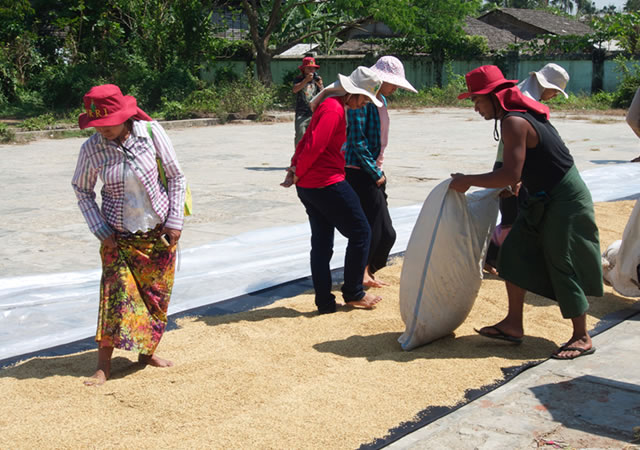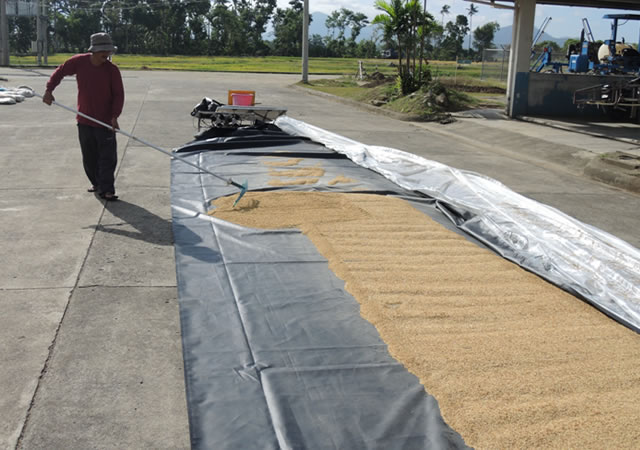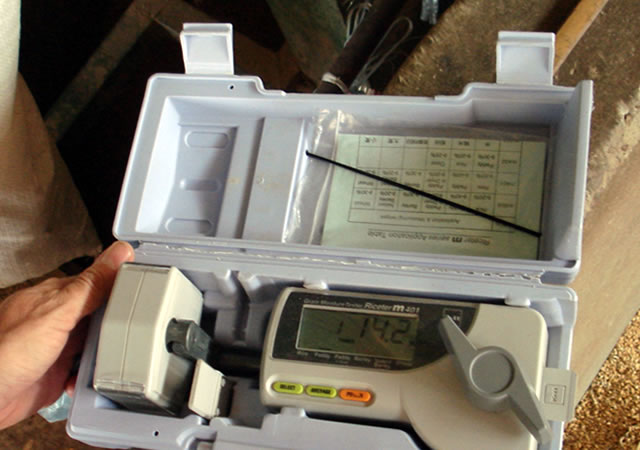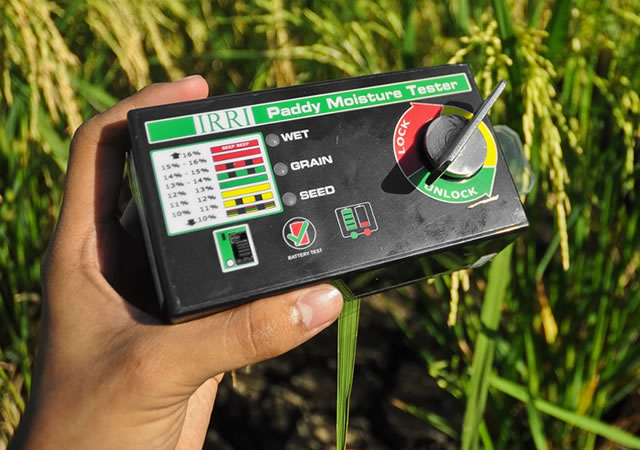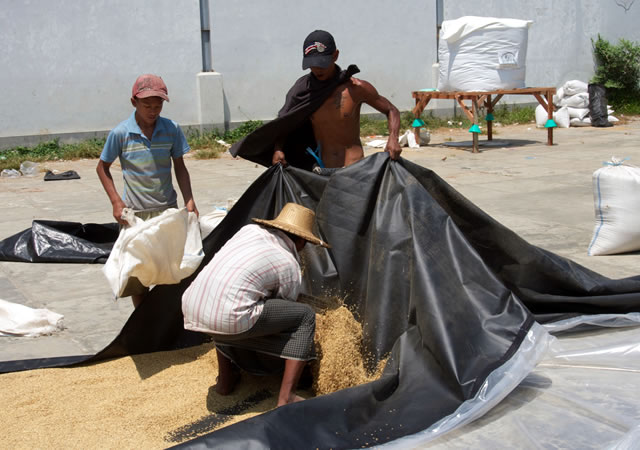The Solar Bubble Dryer
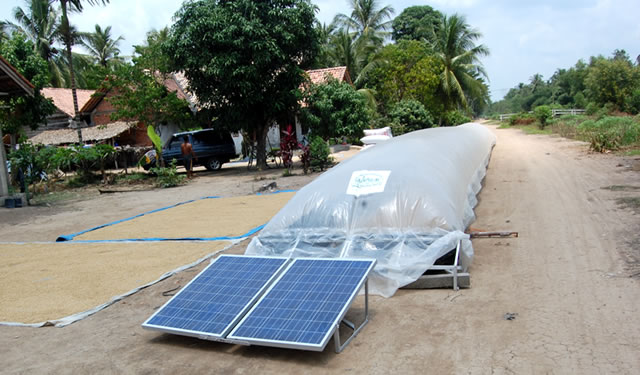 The Solar Bubble Dryer (SBD) is the latest low-cost drying technology developed by IRRI, Hohenheim University and GrainPro. The SBD is mobile and is completely independent from fuel or the power grid, and therefore has very low operating cost. It comes in different sizes, with current models having 0.5 and 1t batch capacity.
The Solar Bubble Dryer (SBD) is the latest low-cost drying technology developed by IRRI, Hohenheim University and GrainPro. The SBD is mobile and is completely independent from fuel or the power grid, and therefore has very low operating cost. It comes in different sizes, with current models having 0.5 and 1t batch capacity.
How does it work?
The SBD uses energy from the sun in two ways. First the drying tunnel serves as a solar collector to convert the energy contained in the sun rays entering the transparent top of the drying tunnel to heat, which increased the temperature of the drying air for faster drying. Second it is equipped with a photovoltaic system consisting of a solar panel, a deep cycle rechargeable battery and a controller to generate electricity that drives a small blower to move air through the drying tunnel, inflate the tunnel, and remove the water evaporated from the grains placed inside the tunnel. A simple roller dragged on ropes attached to the ends underneath the tunnel is used for mixing the grains without the need to open the tunnel. A rake for internal mixing is also available.
How does it compare to other dryers?
The SBD improves the traditional sun drying process, in which farmers spread the paddy in the open under the sun, by protecting it from animals, insects, contamination and rain. The drying tunnel also provides a buffer for the temperature and protects the grains from overheating, as it is common during sun drying at noon.
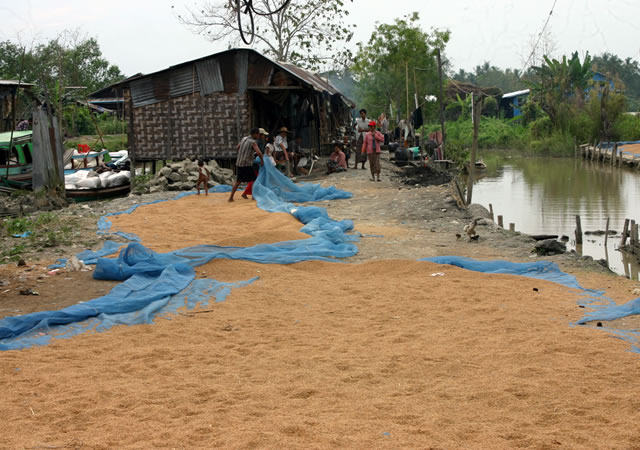 |
 |
| Figure 1: Grains exposed to the weather in traditional sun drying in Indonesia (left) and typical cause of losses in sun drying (right) |
|
The SBD completely eliminates the re-wetting of grains during rain and losses due to animals, spillage and cars running over the grains if they are spread on roads.
 |
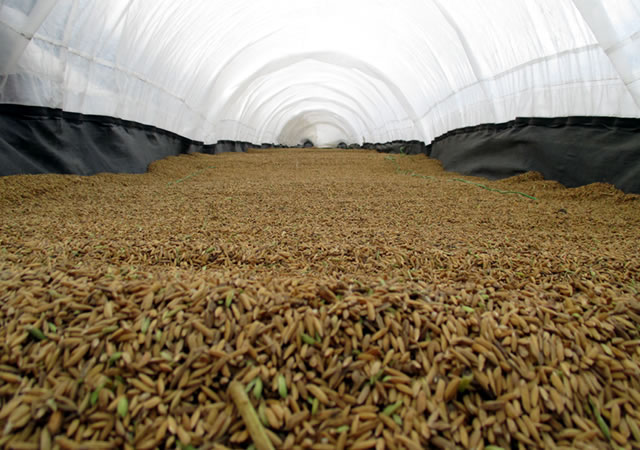 |
| Figure 2: A SBD set up at IRRI during a storm. It effectively protected the grain from the rain. (left), grains protected inside the drying tunnel (right) |
|
Depending on the weather the drying rate during daytime is 0.5-1%/h. Drying time depends on the weather and the initial moisture content of the grains. Skin-dry grains can be dried to 14% moisture content within a sunny day. Wetter grains and during cloudy days the drying might take two days. During rain and at night when the relative humidity of the air is high, the drying process stops, but by keeping the tunnel inflated the grains can be safely kept inside the SBD, while they need to be collected and bagged in the traditional sun drying.
Compared to a mechanical dryer the SBD is more flexible, requires lower investment and does not need fuel for heating the air or running the blower.
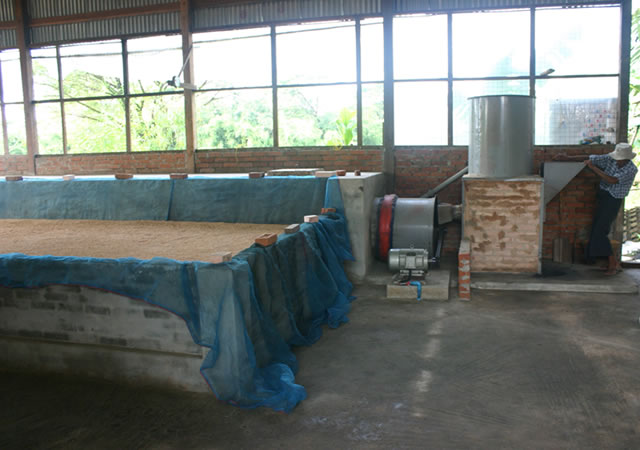 |
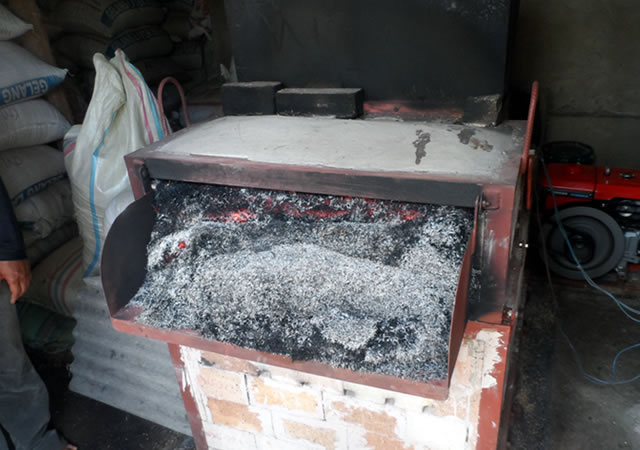 |
| Figure 3: Flat bed dryer (left) requires large capital investment and fuel e.g. for a rice husk furnace for heating the drying air (right) |
|
How to use?
The SBD can be used on any reasonably plane surface like a pavement, on a lawn or even in a harvested rice field with short stubbles. The SBD should be exposed to the sun throughout the day, so it needs to be set-up clear of buildings, trees or other structures that might provide shade at some time during the day. For best results:
- Find a location that is exposed the sun throughout the day, ideally in 90° angle towards the path of the sun
- Before spreading the drying tunnel check the ground and remove any pointed objects that might damage the plastic. If uneven, try to level the ground.
- Spread the tunnel, pull at the ends to make sure it does not have any folds, which would get the mixing roller stuck.
- Assemble the photovoltaic system and connect the battery, solar panels and blower to the controller, as indicated in the manual.
- Position the solar panel so that it faces the sun (adjust it during the day)
- Load the drying tunnel, leave at lest one meter after the blower free of grains, spread the grains evenly up to the sides of the tunnel, when using the roller for mixing the grains will move a bit to the center with every pass of the mixer. To avoid this you can turn the blower off for mixing.
- Close the tunnel and start the blower. Mix every hour for even drying
- Use a moisture tester for monitoring the drying process
- When drying is finished unload the grains.
- After drying: Store the SBD in the storage bag and place it in a location safe from rats. Rats like to nibble on the plastic if the SBD is not in operation.
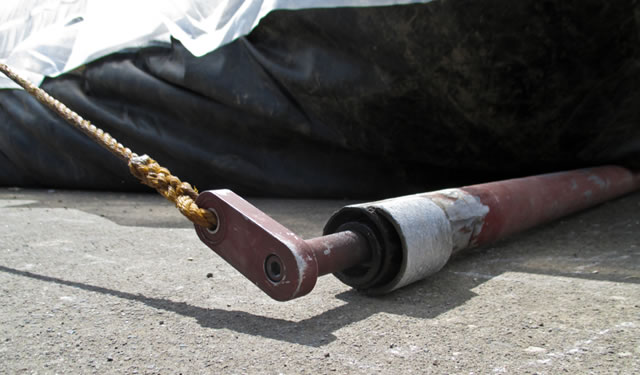 |
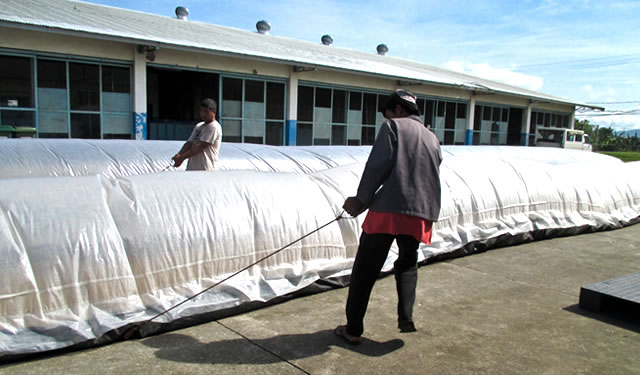 |
| Figure 5: Roller for mixing the grains underneath the drying tunnel (left), pull evenly on both sides (right) | |
Important reminders
- There is a 12V version of the SBD using the photovoltaic system for generating electricity. There is also a 220V version for connecting the fan to the power grid. If you use the latter be aware of the danger of 220V in wet outdoor environments in particular when insulation of wiring is damaged. To avoid electrocution IRRI recommends to use the 12V version.
- Use a deep cycle battery. A starter battery used in cars is cheaper, but can not be discharged as required for the SBD. It will break within one year. For details see the IRRI Fact Sheet “Deep Cycle Battery”.
- Deep-discharging ruins even a deep cycle battery. Always make sure that the battery is charged when you store it and re-charge it periodically. Don’t operate it without the controller, to prevent deep-discharging during operation.
Where to get a SBD?
The first version of the Solar Bubble Dryer was commercialized in September 2014. Units with 1t and 0.5t capacity can be bought from GrainPro.
GrainPro Philippines Inc.
Subic Bay Industrial Park Phase I
Subic Bay Freeport Zone 2222
Philippines
www.grainpro.com
For more information
Email: postharvest@irri.org

